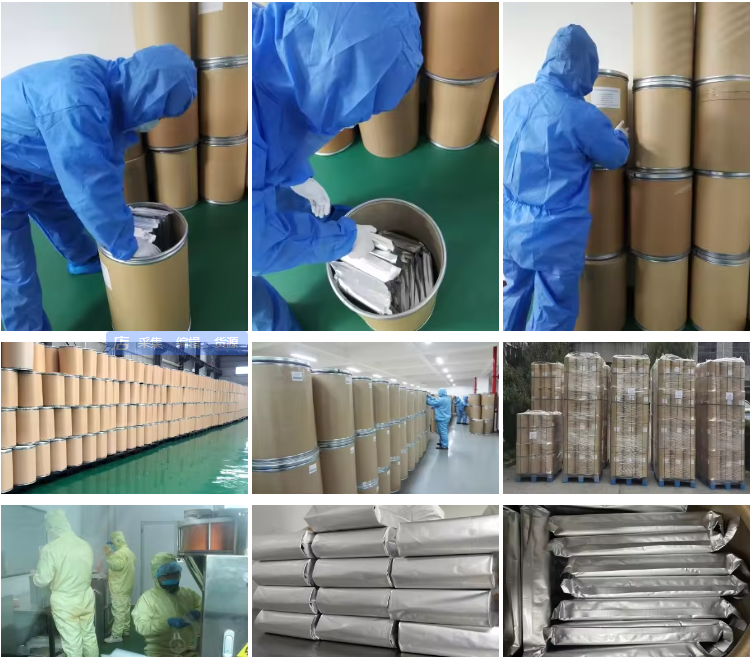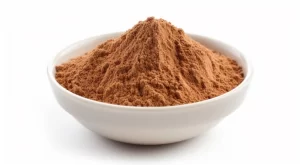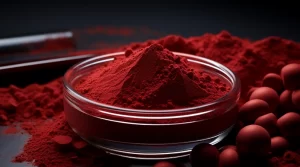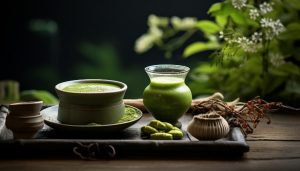A review of natural products for brain enhancement and education

Psychological cognition and the mechanism of action of noosing agents
Mental cognition is a cognitive process that includes attention, perception, representation, memory, creativity, problem solving, speech, and thinking. [1] Cognitive research provides us with a variety of mechanisms, both theory-driven and experience-based, to build a deeper and richer understanding of how to learn and seek opportunities [2].
Everyone has dreamed of becoming smarter, learning more in less time, thinking and reacting faster, and remembering things better. There are compounds on the market today that provide these benefits called Nootropics or nootropics [3]. According to the World Health Organization’s definition [4], nootropic drugs can be defined in more detail as a group of neurological drugs that have the ability to improve memory, restore impaired cognitive function of the brain, improve learning and information reproduction, stimulate active arousal, and increase the body’s resistance to adverse or extreme factors.
Based on the analysis of currently available data on the action of individual psychotropic drugs, ten mechanisms of psychotropic effects can be found [5], including: (1) effects on neurotransmitter systems, including cholinergic and glutaminergic systems, as well as GABA, dopaminergic, adrenergic and 5-hydroxytryptaminergic systems; ② Increased brain biological energy (adenylate cyclase activation, ATP and cAMP synthesis increased); ③ Anti-oxidation (inhibiting the formation of free radicals and peroxidation); Regulate the synthesis of phospholipids and proteins in nerve cells and stabilize the structure of cell membranes; Affect brain mitochondrial formation and mitochondrial dysfunction; Activate the plasticity process of the central nervous system, increase the synthesis of RNA, DNA and protein, and improve the formation of information macromolecules; ⑥ Improve microcirculation, cerebrovascular dilation, reduced platelet aggregation, etc.; ⑦ Increased resistance to hypoxia, increased glucose intake through neuronal membranes and improved utilization; ⑧ The effect on ion channels (calcium, sodium, etc.), the effect on metal chelating agents; ⑨ Effect on nerve growth factor; ⑩ Effects on monoclonal antibodies that interact with beta-amyloid and tau proteins, as well as some other components of this mechanism.
A natural product that improves intelligence, attention and memory
In many cases, natural product nootropics enhance the plasticity of red blood cells and inhibit aggregation, thereby improving the rheological properties of blood and increasing its flow to the brain. Some complex formulations have antioxidant activity, protect brain tissue from neurotoxicity, and improve brain health by inducing synthesis of neuronal proteins, nucleic acids, and phospholipids. The natural products reviewed below were selected based on verifiable experimental data and clinical trials investigating their potential intellectual effects, including: Ginkgo biloba, berry extracts and juices, tea beverages, purslane, sauria, sage, caffeine (coffee, tea, chocolate, cocoa), rhodiola rosea, Guarana, turmeric (in), etc.
Gingko biloba Ginkgo Extract Flavones
The active compounds of Gingko biloba are mainly found in the seeds and leaves. Ginkgo biloba seeds contain minerals, flavonoids, triterpene lactones, phenolic compounds, ginkgotoxin (4-O-methylpyridoxine), ginkgo acid and ginkgophenol, which have astringent effects. Leaves contain flavonosides, diflavones, triterpene lactones (ginkgolides A, B, C, J, M, and ginkgolactones), alkyl phenols, proanthocyanidins, polypentenols, phenolic acids, 6-hydroxykynurenic acid, and ginkgotoxin [6].
In the East, ginkgo biloba is often revered as a memory plant, and its ability to enhance memory and stave off the cognitive decline associated with aging is documented in literature. A double-blind, placebo-controlled, randomized trial evaluating any potential effects of ginkgo biloba on a Neural Cognitive Diagnostics (NCD) model of memory in cognitively healthy adults over 60 years of age found that ginkgo biloba extract EGb-761 improved various aspects of memory. Examples include free recall, recognition of non-contextual materials, and visual memory [7]. Regarding the use of Ginkgo biloba to improve attention-related cognition, healthy subjects (age range 18 to 40 years) who took 2000 mg of ginkgo biloba EGb-761 extract tablets containing 120 mg of the active ingredient for 30 days using a randomized, double-blind approach reported improvements in memory and attention, as well as enhanced cognitive clarity [8].
Berry juice and Berry extract
Studies have found that a range of phenol-rich products (often rich in flavonoids) improve multiple memory and learn-related cognitive aspects in both healthy subjects and dementia subjects [9-11]. Cranberry juice, a plant-derived product rich in phenolic compounds, induced non-statistically self-reported improvements in memory and thinking abilities, energy levels, and mood in cognitively healthy older adults in a double-blind, placebo-controlled, randomized trial [12]. On the other hand, after consuming 230 mL of purple grape juice in healthy young adults, the memory, reaction time and calm scores of these healthy young adults were significantly improved [13].
Tea beverages and extracts
Modern pharmacological studies have shown that tea can stimulate the central nervous system, anti-oxidation, anti-tumor, blood pressure lowering, antibacterial, anti-inflammatory, antiviral, anti-fatigue, anti-radiation and many other activities [14]. The chemical basis of these activities is mainly various chemicals rich in tea with complex structure, such as polyphenols, alkaloids, triterpenes and so on [15]. A tea extract fortified with L-theanine (LGNC-07) has also been shown to improve memory and selective attention, and this enhancement is associated with increased theta waves in multiple brain regions (temporal, frontal, parietal, and occipital regions) and is associated with improved cognitive alertness [16]. Magnetic resonance imaging also showed changes in the short-term plasticity of parietal – frontal synergies in people experimentally drinking whey soft drinks containing green tea extract, which was accompanied by an increase in working memory processing [17].
Pseudopurslane
Bacopa monnieri is A creeping perennial herb whose important bioactive ingredient is triterpenoid dammarane-type saponins, called Bacopa monnieri saponins A, B, and C. Purslane also contains alkaloids such as brahmanine, nicotine, and herpesine, as well as steroids such as stigasterol and beta-sitosterol, and flavonoids such as apigenin and luteolin [18,19].
Purslane is the most significant psychotropic drug that has a significant effect on learning and memory. A recent review highlighted the pro-intellectual effects of Purslane on memory and learning [20]. A 6-week randomized, double-blind, placebo-controlled, non-crossed, parallel trial in a young population of 60 medical students found that administration of pseudopurslane extract CDRI-08(150 mg twice daily) significantly enhanced immediate recall and working memory [21]. In healthy subjects, long-term treatment with 300 mg of Purslane extract (CDRI-08) for 12 weeks improved cognitive processes dependent on input of environmental information, including learning and memory and visual information processing [22]. In one study, it was found that standardized pseudopurslane extract (CDRI-08; A total dose of 300 mg for 90 days) significantly improved spatial memory in healthy participants [23].
Ashwaganda Extract Withanolides South African Nightshade
Ashwagandha originated in North Africa, but is widely distributed in Iraq, Pakistan, northern India and China. The plant contains A steroid compound called solanolactone, which is a triterpenoid lactone with an ergostane skeleton similar to the active compound of ginseng. The first solanolactone to be isolated is Solanolactone A. The main source of solanolactone is the root.
Extracts from Nightshades are commonly obtained from the leaves, stems, and roots of the plant, and common intellectual uses of these extracts involve sleep induction, mood, and improvement of anxiety [24]. A randomized, double-blind, placebo-controlled study in a population of elderly subjects with Mild cognitive impairment (MCI) has shown that the use of South African drunken Nightshade root extract (300 mg twice daily for 8 weeks) improves all aspects of memory and learning. Including visual memory and verbal memory [25]. In healthy adults who took the extract twice daily for 14 days, improvements were observed in scores on the simple response test and the Choice Discrimination test, which assessed attention and sensorimotor performance [26].
Sage
Salvia (Sage) is a plant of the genus Salvia in the labiaceae family, of which there are nearly 1,000 species. Extracts from many plants in this genus are appreciated in traditional medicine for their brain-enhancing potential. The sage plant shows a wide range of biological activities, such as anticholinesterase, antioxidant, anti-inflammatory, estrogenic and sedative activities [27,28]. In healthy subjects, a single dose of sage essential oil (50 microliters) improved performance on memory and attention tasks, reduced mental fatigue, and increased alertness [29]. The terpenoids contained in sage extract have cholinesterase inhibition ability, which is associated with the improvement of cognitive ability in health and disease conditions [30]. In healthy adults, enhanced performance on secondary memory and attention tasks was reported after an intervention with a 7-day interval between dosages of sage extract [31].
Rhodiola rosea
Rhodiola rosea L. is a perennial hardy woody plant of the sedum family. The roots and rhizoids contain multiple active substances, the most important of which are cinnamyl glycoside, tyrosol glucoside and salidroside (Figure 4). Rhodiola rosea is also rich in flavonoids (rhodionin and rhodiosin), monoterpenoids (rosiridol and rosidarin) and triterpenoids (carotenin and β-sitosterol), as well as a variety of organic acids. In particular, citric acid, tartaric acid, malic acid, succinic acid, fumaric acid, chlorogenic acid and gallic acid. These substances all contribute to the specific activity of Rhodiola rosea extract [32,33].
Rhodiola has established its use in traditional medicine in Northern and Eastern European and Asian countries as a plateau adaptation, to improve mental and physical performance, as an antioxidant, and to improve cognitive function, reduce fatigue and depression [34]. Experimental studies [35] have shown that salidroside can reduce cognitive dysfunction in aging mice, reduce neuronal degeneration in CA1 region, and reduce oxidative stress levels. Salidroside also promotes the expression of telomerase reverse transcriptase protein through the phosphatidylinositol-3-kinase/protein kinase B(PI3K/Akt) pathway. Salidroside therapy may be an effective strategy to increase cell survival and prevent cerebral ischemic injury and age-related diseases [36]. A double-blind, randomized, placebo-controlled trial, using a repeated low-dose regimen, studied students who used rhodiola rosea extract or placebo for 20 days during an exam and observed improvements in physical health, neuromotor tests, mental fatigue, and general health indicators in the Rhodiola Rosea extract group [37].
Caffeine
Caffeine is a methylxanthine found in more than 60 species of plants, and in addition to coffee, caffeine is also found in other plant-derived foods and beverages such as tea, chocolate, and cocoa beans [38]. Caffeine is the most relevant stimulant that affects attention NCD.
In the central nervous system, caffeine is an activator of dopaminergic and dopaminergic function. Brain imaging revealed activation in multiple brain regions, including the left cerebellum, putamen, thalamus, cerebellum, and right primary motor cortex, after oral caffeine intake [39]. The main effects of caffeine in attention NCD include improved sustained visual selective attention and goal-specific attention, as well as increased behavioral performance in terms of accuracy and reaction speed [40,41]. Consuming moderately high doses of caffeine (about 600 mg) has been shown to have associated positive effects on alertness and alertness, and is associated with some commonly prescribed medications (i.e., Modafinil and amphetamines), used to improve concentration [42].
Guarana and its seed extract
Guarana (Paullinia cupana Kunth) is an ancient cultivated plant native to South America. Part of the commercial value of Guarana plants is the seeds, which are high in methylxanthine-like purine alkaloids (caffeine, theobromine and theophylline). Guarana seeds contain the highest natural caffeine in the world (2-8%), 3-5 times higher than coffee beans, and also contain high concentrations of tannins and other compounds such as saponins, polysaccharides (starch), proteins, fatty acids, trace elements (manganese, rubidium, nickel and strontium) and essential oils. The essential oil of this plant contains compounds such as carvacrol and artemisia brain [43-45].
Guarana seed extract has a significant intellectual promoting effect, and Guarana partially reversed the amnestic effect of scopolamine treatment in mice and rats after single or repeated administration by inadministration in rats, indicating a positive effect on memory acquisition [46]. In a double-blind, placebo-controlled study of 28 healthy young volunteers, the effects of individual doses of 75 mg Guarana ethanol extract or 200 mg ginseng ethanol extract, or a combination of both, on cognition and mood were investigated. All three treatments improved daily task performance compared to placebo. In the case of vitamin A supplementation, improvements in sentence validation and attention were observed, but accuracy was reduced. The speed of execution of attention and memory tasks increased with ginseng and combination treatments, while all three treatments improved the performance of serial subtraction tasks [47,48].
Kurkuma-Wurzel-Extrakt Curcumin
Turmeric is a popular spice in India, commonly found in curry powder. The active ingredient in it, curcumin, is an anti-inflammatory and antioxidant that has been shown to cross the blood-brain barrier, providing direct health benefits to brain cells. A number of studies have shown that curcumin can improve the memory of Alzheimer’s patients, relieve depression, and help new brain cells grow. Curcumin has anti-inflammatory effects by reducing histamine levels in the body and increasing adrenocorticosterone [49]. A UCLA study found that people aged 50 to 90 with mild memory loss who took 90 mg of curcumin twice a day for 18 months improved their memory by an average of 28 percent compared with a placebo group, and their depression scores also improved.
Referenz
[1] Hunt, R. R., & Ellis, H. C., Fundamentals of cognitive psychology (6th ed.). McGraw-Hill. 1999.
[2] Ephrem Fernandez, Yilma Woldgabreal, Andrew Day, Tuan Pham, Bianca Gleich, Elias Aboujaoude, Live psychotherapy by video versus in-person: A meta-analysis of efficacy and its relationship to types and targets of treatment, Clin Psychol Psychother, 2021, 28(6): 1535-1549.
[3] Onaolapo, A. Y., A. Y. Obelawo, and O. J. Onaolapo. Brain ageing, cognition and diet: A review of the emerging roles of food-based nootropics in mitigating age-related memory decline. Current Aging Science, 2019, 12 (1): 2–14.
[4] WHO, Optimizing brain health across the life course, 2022.
[5] Solmaz GD, Erbaş O. Nootropics as Cognitive Enhancers: Pharmacological Properties and Therapeutic Use. JEB Med Sci 2023;4(1):52-61.
[6] Huh, H.; Staba, E.J. The Botany and Chemistry of Ginkgo biloba L. J. Herbs Spices Med. Plants 1992, 1, 91–124.
[7] Mix, J. A., and W. D. Crews. A double-blind, placebo-controlled, randomized trial of Ginkgo biloba extract EGb 761 in a sample of cognitively intact older adults: Neuropsychological findings. Human Psychopharmacology: Clinical and Experimental, 2002, 17 (6): 267–77.
[8] Stough, C., J. Clarke, J. Lloyd, and P. J. Nathan. Neuropsychological changes after 30-day Ginkgo biloba administration in healthy par- ticipants. The International Journal of Neuropsychopharmacology, 2001, 4 (2): 131–4.
[9] Spencer, J. P. The impact of fruit flavonoids on memory and cognition. The British Journal of Nutrition, 2010, 104 (Suppl 3): S40–S7.
[10] Uddin, M. S., M. T. Kabir, D. Tewari, B. Mathew, and L. Aleya. Emerging signal regulating potential of small molecule biflavonoids to combat neuropathological insults of Alzheimer’s disease. The Science of the Total Environment, 2020, 700:134836.
[11] Whyte, A. R., S. Rahman, L. Bell, I. Edirisinghe, R. Krikorian, C. M. Williams, and B. Burton-Freeman. 2021. Improved metabolic function and cognitive performance in middle-aged adults following a single dose of wild blueberry. European Journal of Nutrition, 2021, 60 (3):1521–36.
[12] Crews, W. D., D. W. Harrison, M. L. Griffin, K. Addison, A. M. Yount, M. A. Giovenco, and J. Hazell. A double-blinded, placebo-controlled, randomized trial of the neuropsychologic efficacy of cranberry juice in a sample of cognitively intact older adults: Pilot study findings. The Journal of Alternative and Complementary Medicine, 2005, 11 (2):305–309.
[13] Haskell-Ramsay, C. F., R. C. Stuart, E. J. Okello, and A. W. Watson. Cognitive and mood improvements following acute supple- mentation with purple grape juice in healthy young adults. European Journal of Nutrition, 2017, 56 (8):2621–2631.
[14] 洪叶,等. 茶叶中的化学成分J. 山东化工, 2021, 50(14): 79-80.
[15] 杨春鹏.怒江红山茶的化学成分研究D.昆明:云南中医学院,2016.
[16] Park, S.-K., I.-C. Jung, W. K. Lee, Y. S. Lee, H. K. Park, H. J. Go, K. Kim, N. K. Lim, J. T. Hong, S. Y. Ly, et al. A combination of green tea extract and l-theanine improves memory and attention in subjects with mild cognitive impairment: A double-blind placebo-controlled study. Journal of Medicinal Food, 2011, 14 (4): 334–43.
[17] Schmidt, A., F. Hammann, B. Wölnerhanssen, A. C. Meyer-Gerspach, J. Drewe, C. Beglinger, and S. Borgwardt. Green tea extract enhances parieto-frontal connectivity during working memory processing. Psychopharmacology, 2014, 231 (19): 3879–88.
[18] Bhandari, P.; Kumar, N.; Singh, B.; Kaur, I. Dammarane triterpenoid saponins from Bacopa monnieri. Can. J. Chem. 2009, 87, 1230–1234.
[19] Phrompittayarat, W.; Wittaya-Areekul, S.; Jetiyanon, K.; Putalun, W.; Tanaka, H.; Ingkaninan, K. Determination of saponin glycosides in Bacopa monnieri by reversed phase high performance liquid chromatography. Thai Pharmaceut. Health Sci. J. 2007, 2, 26–32.
[20] Banerjee, S., U. Anand, S. Ghosh, D. Ray, P. Ray, S. Nandy, G. D. Deshmukh, V. Tripathi, and A. Dey. Bacosides from Bacopa monnieri extract: An overview of the effects on neurological disorders. Phytotherapy research: PTR, 2021, 35 (10): 5668–5679.
[21] Kumar, N., L. G. Abichandani, V. Thawani, K. J. Gharpure, M. U. R. Naidu, and G. V. Ramana. Efficacy of standardized extract of Bacopa monnieri (Bacognize®) on cognitive functions of medical students: A six-week, randomized placebo-controlled trial. Evidence-Based Complementary and Alternative Medicine: eCAM, 2016: 4103423.
[22] Stough, C., J. Lloyd, J. Clarke, L. A. Downey, C. W. Hutchison, T. Rodgers, and P. J. Nathan. The chronic effects of an extract of Bacopa monniera (Brahmi) on cognitive function in healthy human subjects. Psychopharmacology, 2001, 156 (4): 481–4.
[23] Stough, C., L. A. Downey, J. Lloyd, B. Silber, S. Redman, C. Hutchison, K. Wesnes, and P. J. Nathan. Examining the nootropic effects of a special extract of Bacopa monniera on human cognitive functioning: 90 day double-blind placebo-controlled randomized trial. Phytotherapy Research: PTR, 2008, 22 (12): 1629–34.
[24] Singh, G., P. K. Sharma, R. Dudhe, and S. Singh. Biological activities of Withania somnifera. Annals of Biological Research, 2009, 1 (3): 56–63.
[25] Choudhary, D., S. Bhattacharyya, and K. Joshi. Body weight management in adults under chronic stress through treatment with ashwagandha root extract: A double-blind, randomized, placebo-controlled trial. Journal of Evidence-Based Complementary & Alternative Medicine, 2017, 22 (1): 96–106.
[26] Pingali, U., R. Pilli, and N. Fatima. Effect of standardized aqueous extract of Withania somnifera on tests of cognitive and psy- chomotor performance in healthy human participants. Pharmacognosy Research, 2014, 6 (1): 12–18.
[27] Perry, N. S. L., C. Bollen, E. K. Perry, and C. Ballard. Salvia for dementia therapy: Review of pharmacological activity and pilot tolerability clinical trial. Pharmacology Biochemistry and Behavior, 2003, 75(3): 651–659.
[28] Tildesley, N. T. J., D. O. Kennedy, E. K. Perry, C. Ballard, K. A. Wesnes, and A. B. Scholey. Positive modulation of mood and cog- nitive performance following administration of acute doses of Salvia lavandulaefolia essential oil to healthy young volunteers. Physiology & Behavior, 2005, 83(5): 699–709.
[29] Kennedy, D. O., F. L. Dodd, B. C. Robertson, E. J. Okello, J. L. Reay, A. B. Scholey, and C. F. Haskell. Monoterpenoid extract of sage (Salvia lavandulaefolia) with cholinesterase inhibiting properties improves cognitive performance and mood in healthy adults. Journal of Psychopharmacology, 2011, 25(8): 1088–1100.
[30] Miroddi, M., M. Navarra, M. C. Quattropani, F. Calapai, S. Gangemi, and G. Calapai. Systematic review of clinical trials assessing pharmacological properties of Salvia species on memory, cognitive impairment and Alzheimer’s disease. CNS Neuroscience & Therapeutics, 2014, 20(6): 485–95.
[31] Kennedy, D. O., F. L. Dodd, B. C. Robertson, E. J. Okello, J. L. Reay, A. B. Scholey, and C. F. Haskell. 2011. Monoterpenoid extract of sage (Salvia lavandulaefolia) with cholinesterase inhibiting properties improves cognitive performance and mood in healthy adults. Journal of Psychopharmacology, 2011, 25 (8): 1088–1100.
[32] Brown, R.P.; Gerbarg, P.L.; Ramazanov, Z. Rhodiola rosea A phytomedicinal overview. Herbal Gram, 2002, 56, 40–52.
[33] Tasheva, K.; Kosturkova, G. The Role of Biotechnology for Conservation and Biologically Active Substances Production of Rhodiola rosea: Endangered Medicinal Species. Sci. World J. 2012, 2012, 274942.
[34] Panossian, A.; Wikman, G.; Sarris, J. Rosenroot (Rhodiola rosea): Traditional use, chemical composition, pharmacology and clinical efficacy. Phytomedicine 2010, 17, 481–493.
[35] Yu, S.; Liu, M.; Gu, X.; Ding, F. Neuroprotective Effects of Salidroside in the PC12 Cell Model Exposed to Hypoglycemia and Serum Limitation. Cell Mol. Neurobiol. 2008, 28, 1067.
[36] Zhu, L.; Liu, Z.; Ren, Y.; Wu, X.; Liu, Y.; Wang, T.; Li, Y.; Cong, Y.; Guo, Y. Neuroprotective effects of salidroside on ageing hippocampal neurons and naturally ageing mice via the PI3K/Akt/TERT pathway. Phytother. Res. 2021, 35, 5767–5780.
[37] Spasov, A.A.; Wikman, G.K.; Mandrikov, V.B.; Mironova, I.A.; Neumoin, V.V. A double-blind, placebo-controlled pilot study of the stimulating and adaptogenic effect of Rhodiola rosea SHR-5 extract on the fatigue of students caused by stress during an examination period with a repeated low-dose regimen. Phytomedicine 2000, 7, 85–89.
[38] Verster, J. C., and J. Koenig. Caffeine intake and its sources: A review of national representative studies. Critical Reviews in Food Science and Nutrition, 2018, 58(8): 1250–1259.
[39] Park, C. A., C. K. Kang, Y. D. Son, E. J. Choi, S. H. Kim, S. T. Oh, Y. B. Kim, C. W. Park, and Z. H. Cho. The effects of caffeine ingestion on cortical areas: Functional imaging study. Magnetic Resonance Imaging, 2014, 32 (4): 366–371.
[40] Kahathuduwa, C. N., C. S. Dhanasekara, S. H. Chin, T. Davis, V. S. Weerasinghe, T. L. Dassanayake, and M. Binks. l-Theanine and caffeine improve target-specific attention to visual stimuli by decreasing mind wandering: A human functional magnetic resonance imaging study. Nutrition Research (New York, NY), 2018, 49: 67–78.
[41] Rao, A., H. Hu, and A. C. Nobre. The effects of combined caffeine and glucose drinks on attention in the human brain. Nutritional Neuroscience, 2005, 8(3): 141–53.
[42] Wesensten, N. J., G. Belenky, M. A. Kautz, D. R. Thorne, R. M. Reichardt, and T. J. Balkin. Maintaining alertness and performance during sleep deprivation: Modafinil versus caffeine. Psychopharmacology, 2002, 159 (3): 238–247.
[43] Marques, L.L.M.; Ferreira, E.D.F.; Paula, M.N.d.; Klein, T.; Mello, J.C.P.d. Paullinia cupana: A multipurpose plant-a review. Rev. Bras. Farmacogn. 2019, 29, 77–110.
[44] Hamerski, L.; Somner, G.V.; Tamaio, N. Paullinia cupana Kunth (Sapindaceae): A review of its ethnopharmacology, phytochemistry and pharmacology. J. Med. Plant Res. 2013, 7, 2221–2229.
[45] Ushirobira, T.A.; Yamaguti, E.; Uemura, L.M.; Nakamura, C.V.; Dias Filho, B.P.; Mello, J.P. Chemical and microbiological study of extract from seeds of guaraná (Paullinia cupana var. sorbilis). Lat. Am. J. Pharm. 2007, 26, 5–9.
[46] Otobone, F.J.; Sanches, A.C.; Nagae, R.L.; Martins, J.V.C.; Obici, S.; Mello, J.C.P.d.; Audi, E.A. Effect of crude extract and its semi purified constituents from guaraná seeds Paullinia cupana var. sorbilis (Mart.) lucke on cognitive performance in Morris water maze in rats. Braz. Arch. Biol. Technol. 2005, 48, 723–728.
[47] Kennedy, D.O.; Haskell, C.F.; Wesnes, K.A.; Scholey, A.B. Improved cognitive performance in human volunteers following administration of guarana (Paullinia cupana) extract: Comparison and interaction with Panax ginseng. Pharmacol. Biochem. Behav. 2004, 79, 401–411.
[48] Patrick, M.; Kim, H.A.; Oketch-Rabah, H.; Marles, R.J.; Roe, A.L.; Calderón, A.I. Safety of Guarana Seed as a Dietary Ingredient: A Review. J. Agric. Food. Chem. 2019, 67, 11281–11287.
[49] Aya Y M A, Sasikala C, Basma M. A R, et al. Pharmacological activities of Curcumin: An updateJ. Research J. Pharm. and Tech. 2022; 15(6):2809-2813.
Gingko biloba Ginkgo Extract Flavones supplier Turmeric Root Extract Curcumin supplier : www.backvita.com
E-Mail: [email protected]
Telefon: +86 (029) 8187 2325



